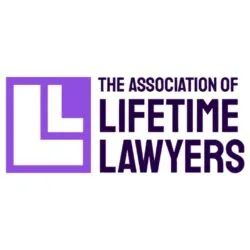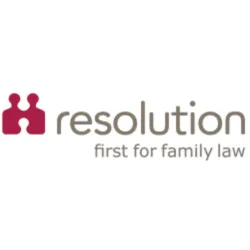
What are the types of discrimination at work in the UK?
What is Discrimination at Work?
Discrimination at work is the detrimental treatment of people with protected characteristics like sex, gender, age, race, disability, religion, marriage, pregnancy, and gender reassignment.
It is a well-known fact that it is unlawful to be discriminatory in the workplace. What is not so well-known is what discrimination means in terms of Employment Law. We look at various types of discrimination and what constitutes discrimination in legal terms.
We have many specialists in discrimination cases, contact us if something has happened to you and let us help and guide you through the process.
Can I Make a Discrimination at Work Claim?
The law protects not just employees but also workers and some self-employed persons. It also offers protection from discrimination to job applicants.
The law about discrimination in employment is found in the Equality Act 2010. It is important to understand the process of submitting a discrimination claim, so we recommend contacting our specialist solicitors to get more of an understanding or learn how to take legal action about discrimination.
Protected Characteristics from Discrimination at Work
Protected Characteristics are attributes that are protected from discrimination under the Equality Act 2010. This means it is unlawful to discriminate against a person in the workplace for any of the following reasons:
- Sex or Marital Status
- Gender Reassignment
- Race
- Religion or Belief
- Sexual Orientation
- Age
- Disability
- Pregnancy and Maternity
A common misconception that people tend to have is that unfair treatment at work automatically constitutes discrimination. However, this is not the case.
Example of Discrimination at Work
If an employee is dismissed because she is a woman, this would be discriminatory. It is worth noting that you do not need a minimum length of service to pursue a discrimination claim.
Types of Discrimination at Work
The Equality Act 2010 lists several different types of discrimination under the heading “Prohibited Conduct”. There are four “main” types of prohibited conduct which include: Direct Discrimination, Indirect Discrimination, Harassment and Victimisation. These are explored further below.
What are the Types of Discrimination at Work?
- Direct discrimination
- Indirect discrimination
- Harassment
- Victimisation
1. Direct Discrimination at Work Definition
Direct Discrimination is arguably the most straight forward form of discrimination and is what most people would think of as discrimination.
What is the legal test for discrimination?
Direct Discrimination occurs when an employer or individual treats a person less favourably than they treat or would treat others because of one or more of the protected characteristics.
Example of direct discrimination
A gay man applies for a promotion within his workplace. Despite being the best candidate for the role he is not selected for the promotion, instead, an employee with less experience and less suitable qualifications is selected. The key difference between the two applicants is their sexual orientation; the successful candidate is heterosexual.
Here it may be the case that the first applicant has suffered less favourable treatment (not receiving a promotion) because of a protected characteristic and this is not how the employer treats or would treat others (for example his successful colleague who does not share his protected characteristic).
There is no justification defence for direct discrimination claims (except in age discrimination cases).
2. Indirect Discrimination at Work Definition
Indirect discrimination results from practices and policies that do not directly discriminate against a particular group of people, but which (indirectly) have the effect of disadvantaging them.
What is the legal test for discrimination?
Indirect discrimination arises where a practice or policy:
- Applies to people whether they share the Claimant’s protected characteristic.
- Puts the Claimant at a disadvantage when compared with people who do not share their protected characteristic.
- Where this can’t be shown to be a proportionate means of achieving a legitimate aim.
Example of indirect discrimination
An employer has a policy requiring employees to attend work regularly (an absence management policy). This policy applies to all employees regardless of circumstance. This means that employees who have long periods of sickness absence might eventually be dismissed. The Claimant has Crohn’s disease, a disability which often requires them to have an amount of time off work. The employer claims that the absence management policy is a proportionate means of achieving a legitimate aim – i.e. increasing employee attendance at work.
This is possible indirect discrimination as the Claimant is at greater risk of dismissal than his colleagues because he must take time off work due to a disability. The question for the Tribunal will now be, is the policy a “proportionate means of achieving a legitimate aim”?
It may be that the employer could consider putting reasonable adjustments in place for employees considered to have a disability under the Equality Act 2010. This may be extending the sickness absence triggers to account for their potentially higher absence rate.
3. Harassment at Work Definition
The first point to make about workplace harassment is that its definition in employment law is different from most people’s idea of what harassment is. As with the other types of discrimination listed above, harassment needs to relate to a protected characteristic.
What is the legal test for discrimination?
A person is said to harass another if they:
- “Engage in unwanted conduct related to a relevant protected characteristic which has the purpose or effect of either: violating an individual’s dignity, or creating an intimidating, hostile, degrading, humiliating or offensive environment for the individual”.
The protected characteristics that apply in harassment cases are age, disability, gender reassignment, race, religion or belief, sex, and sexual orientation. The Act is worded so that even if a person does not intend their conduct to be harassment it still can be if it has the effect of creating a humiliating environment for an individual, for example.
Example of discrimination
An individual’s manager tells him “I believe older people are generally worse at their jobs and make more mistakes than younger people”. He is over the age of 73 and does not appreciate this remark. In saying this to him his manager has caused him to feel degraded and humiliated.
4. Victimisation at Work Definition
Victimisation occurs when someone suffers from poor treatment because:
- They have done a protected act or,
- They are believed to have done a protected act or may do in the future.
Victimisation is one of the lesser-known forms of discrimination and has a particular legal meaning.
Examples of protected acts are:
- Making a complaint about discriminatory treatment to your employer
- Giving evidence in the Tribunal
- Pursuing a discrimination claim.
Example of victimisation
An employee believes they have been discriminated against at work. The employee raises a grievance about this treatment with their employer. The employer dismisses the employee straight after they make the complaint stating that they “don’t want to have to deal with it”.
This situation is likely to give rise to a claim of Victimisation as the employer has dismissed the employee because the employee complained about discrimination.
Frequently Asked Questions About Discrimination at Work
What is the difference between direct discrimination & indirect discrimination?
Direct discrimination occurs when an individual or group of people are treated unfairly because of their protected characteristic. Indirect discrimination occurs when there are practices and policies that apply generally however put those with a protected characteristic at a particular disadvantage.
What is an example of direct discrimination at work?
If there is a promotion opportunity at work and men are preferred, this is an example of direct discrimination as a woman is being discriminated against because her sex is one of the protected characteristics.
What is the difference between harassment discrimination and victimisation discrimination?
Harassment discrimination is unwanted conduct that someone receives that negatively affects them. Victimisation discrimination is where someone is treated poorly because they have complained or given support regarding an issue.
What is an example of harassment discrimination at work?
If an employee of Asian origin is subject to racially derogatory language, this will amount to harassment as it is unwanted contact that violates her dignity and creates an intimidating, hostile and offensive environment.
What is an example of victimisation discrimination at work?
If in the past, you make a complaint about sexual harassment in the workplace and someone brought it up saying ‘what are you going to do, tell on me’ and treated you unfairly, this would amount to victimisation discrimination.
What places am I protected from discrimination?
- The workplace
- An association, society, or club
- Transport
- Public services
- Public bodies
- Businesses and other organisations
If you’ve suffered discrimination at work please contact Morrish Solicitors on 033 3344 9600 or simply fill in our online enquiry form. A member of our Employment Law team will discuss the situation with you, explain your rights and see if you are eligible to bring forward a claim.










